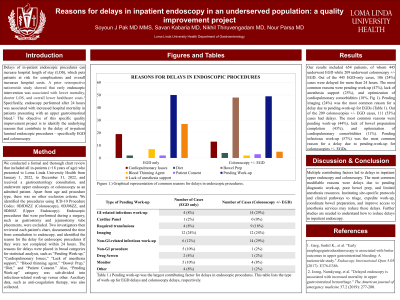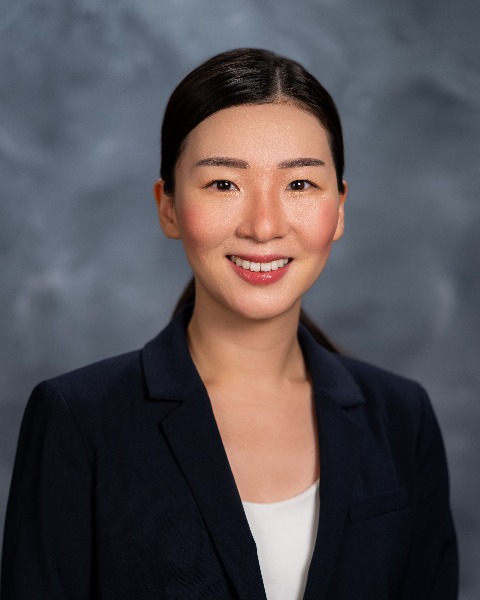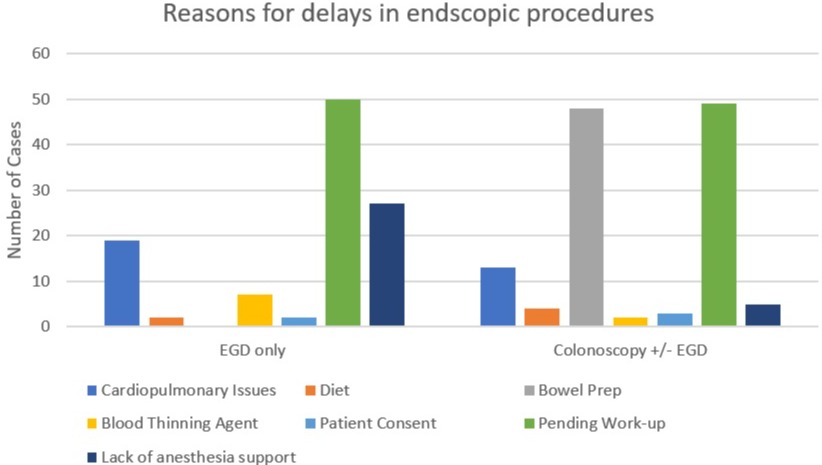Tuesday Poster Session
Category: Practice Management
P4095 - Reasons for Delays in Inpatient Endoscopy in an Underserved Population: A Retrospective Cohort Study
Tuesday, October 24, 2023
10:30 AM - 4:00 PM PT
Location: Exhibit Hall

Has Audio

Soyoun J. Pak, MD, MMS
Loma Linda University Health
Loma Linda, California
Presenting Author(s)
Soyoun J. Pak, MD, MMS1, Savan Kabaria, MD1, Nikhil Thiruvengadam, MD2, Nour Parsa, MD1
1Loma Linda University Health, Loma Linda, CA; 2Loma Linda University, Loma Linda, CA
Introduction: The delay of inpatient endoscopic procedures can increase hospital length of stay (LOS), putting patients at risk for complications and increasing hospital costs. A 2017 retrospective nationwide study showed that early endoscopic intervention was associated with lower mortality, shorter LOS, and lower healthcare costs. The objective of this quality improvement project is to identify the underlying reasons that contribute to the delay of inpatient luminal endoscopic procedures - specifically EGD and colonoscopy.
Methods: We conducted a retrospective cohort study that included all patients that were admitted to Loma Linda University Health from January 1, 2022 to December 31, 2022. We focused on patients that received a gastroenterology consultation and underwent upper endoscopy or colonoscopy during their admission. Additionally, the time from initial consultation to endoscopy was reviewed, and the reason for the delay (if the endoscopy was performed more than 24 hours after the initial consultation) was identified.
Results: Our study included 654 patients, of whom 445 underwent EGD while 209 underwent colonoscopy +/- EGD. Out of the 445 EGD-only cases, 106 (24%) cases were delayed for more than 24 hours. The most common reasons were pending work-up (47%), lack of anesthesia support (25%), and optimization of cardiopulmonary comorbidities (18%, Fig 1). Pending imaging (24%) was the most common reason for a delay due to pending-work-up for EGDs (Table 1). Out of the 209 colonoscopies +/- EGD cases, 111 (53%) cases had delays. The most common reasons were pending work-up (44%), lack of bowel preparation completion (43%), and optimization of cardiopulmonary comorbidities (11%). Pending infectious work-up (57%) was the most common reason for a delay due to pending-work-up for colonoscopies +/- EGDs.
Discussion: Multiple contributing factors led to delays in inpatient upper endoscopy and colonoscopy. The most common modifiable reasons were delays due to pending diagnostic work-up, poor bowel prep, and limited anesthesia resources. Instituting site-specific protocols and clinical pathways to triage, expedite work-up, and coordinate bowel preparation may reduce these delays. These efforts may ultimately improve access to anesthesia services, reduce delays, and shorten hospital LOS.

Disclosures:
Soyoun J. Pak, MD, MMS1, Savan Kabaria, MD1, Nikhil Thiruvengadam, MD2, Nour Parsa, MD1. P4095 - Reasons for Delays in Inpatient Endoscopy in an Underserved Population: A Retrospective Cohort Study, ACG 2023 Annual Scientific Meeting Abstracts. Vancouver, BC, Canada: American College of Gastroenterology.
1Loma Linda University Health, Loma Linda, CA; 2Loma Linda University, Loma Linda, CA
Introduction: The delay of inpatient endoscopic procedures can increase hospital length of stay (LOS), putting patients at risk for complications and increasing hospital costs. A 2017 retrospective nationwide study showed that early endoscopic intervention was associated with lower mortality, shorter LOS, and lower healthcare costs. The objective of this quality improvement project is to identify the underlying reasons that contribute to the delay of inpatient luminal endoscopic procedures - specifically EGD and colonoscopy.
Methods: We conducted a retrospective cohort study that included all patients that were admitted to Loma Linda University Health from January 1, 2022 to December 31, 2022. We focused on patients that received a gastroenterology consultation and underwent upper endoscopy or colonoscopy during their admission. Additionally, the time from initial consultation to endoscopy was reviewed, and the reason for the delay (if the endoscopy was performed more than 24 hours after the initial consultation) was identified.
Results: Our study included 654 patients, of whom 445 underwent EGD while 209 underwent colonoscopy +/- EGD. Out of the 445 EGD-only cases, 106 (24%) cases were delayed for more than 24 hours. The most common reasons were pending work-up (47%), lack of anesthesia support (25%), and optimization of cardiopulmonary comorbidities (18%, Fig 1). Pending imaging (24%) was the most common reason for a delay due to pending-work-up for EGDs (Table 1). Out of the 209 colonoscopies +/- EGD cases, 111 (53%) cases had delays. The most common reasons were pending work-up (44%), lack of bowel preparation completion (43%), and optimization of cardiopulmonary comorbidities (11%). Pending infectious work-up (57%) was the most common reason for a delay due to pending-work-up for colonoscopies +/- EGDs.
Discussion: Multiple contributing factors led to delays in inpatient upper endoscopy and colonoscopy. The most common modifiable reasons were delays due to pending diagnostic work-up, poor bowel prep, and limited anesthesia resources. Instituting site-specific protocols and clinical pathways to triage, expedite work-up, and coordinate bowel preparation may reduce these delays. These efforts may ultimately improve access to anesthesia services, reduce delays, and shorten hospital LOS.

Figure: Fig 1.) Bar graph of the different reasons for delay in endoscopic procedures.
Disclosures:
Soyoun Pak indicated no relevant financial relationships.
Savan Kabaria indicated no relevant financial relationships.
Nikhil Thiruvengadam indicated no relevant financial relationships.
Nour Parsa indicated no relevant financial relationships.
Soyoun J. Pak, MD, MMS1, Savan Kabaria, MD1, Nikhil Thiruvengadam, MD2, Nour Parsa, MD1. P4095 - Reasons for Delays in Inpatient Endoscopy in an Underserved Population: A Retrospective Cohort Study, ACG 2023 Annual Scientific Meeting Abstracts. Vancouver, BC, Canada: American College of Gastroenterology.
